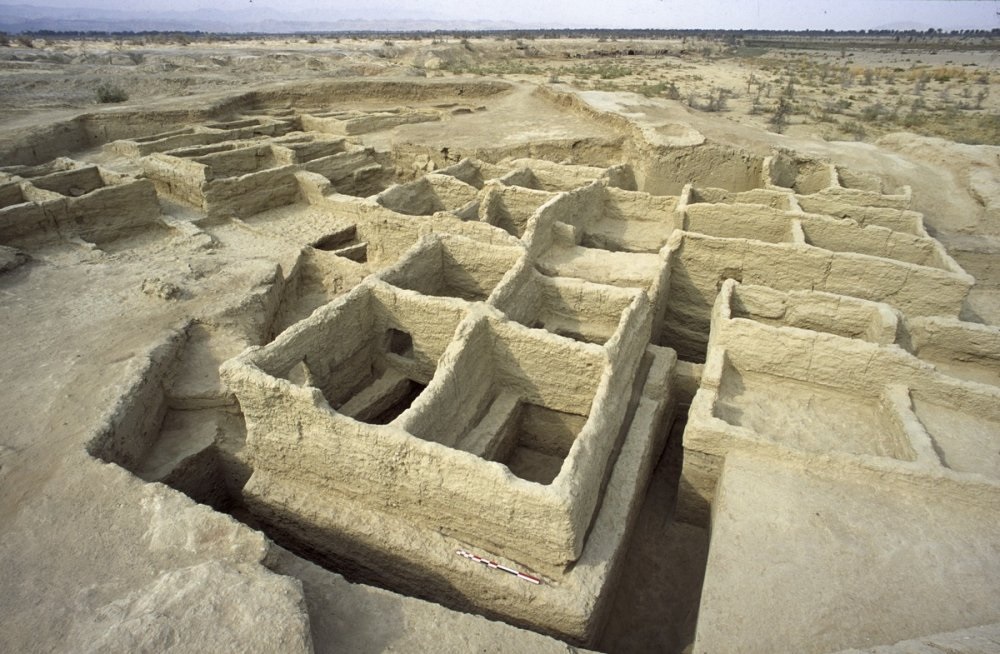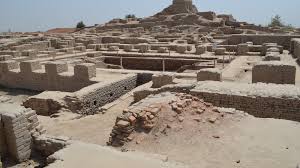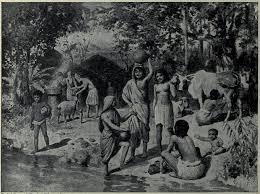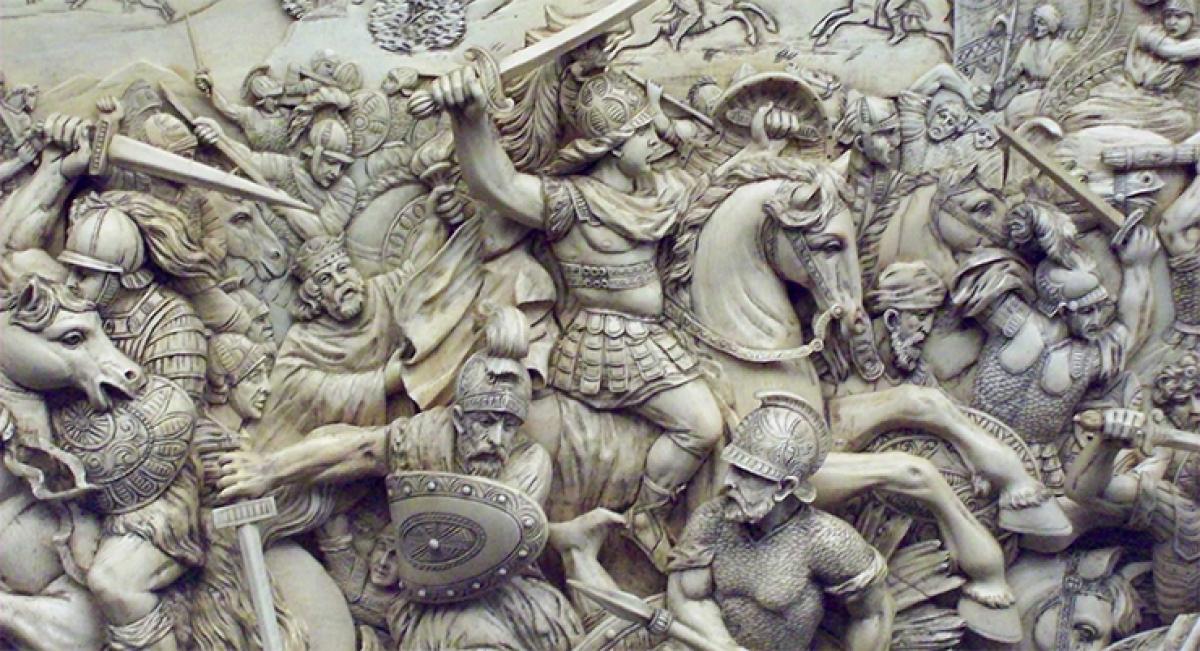History Timeline
Explore the rich and diverse history of Sindh through a chronological timeline of key events and periods.
Mehrgarh Civilization
7000 BCE – 3300 BCE

📍 Location: Mehrgarh is located in the Kacchi Plain of Balochistan, near the Bolan River. Though geographically in Balochistan, it is culturally considered the forerunner of the Indus Valley Civilization. 🏺 Discovery: Discovered in 1954 by a team of French archaeologists led by Jean-François Jarrige. Mehrgarh shows that the Indus Valley Civilization was not sudden but the result of gradual development. 🌾 Agricultural Development: Cultivation of wheat, barley, cotton, and other crops. Domestication of animals like cattle, goats, and sheep. Early irrigation techniques existed. 🏠 Settlements & Structures: Mud-brick houses and storage rooms. Organized village structures. ⚱️ Tools & Pottery: Handmade and painted pottery. Tools made from stone, bone, and copper. Jewelry and artistic artifacts. ⚰️ Burial Practices: Bodies were buried with tools, ornaments, and pottery—indicating spiritual beliefs. 🎓 Importance: One of the earliest known farming communities in South Asia. A cultural precursor to the advanced urban Indus Valley Civilization.
Indus Valley Civilization
3300 BCE – 1300 BCE

Aryan Period: An Important Chapter in the History of Sindh
1500 - 500 BCE

Introduction:
The Aryan Period, also referred to as the "Vedic Period," proved to be a significant turning point in the history of Sindh. From approximately 1500 BCE to 500 BCE, the influence of the Aryan civilization greatly expanded in Sindh. During this period, the culture, social system, language, and religious practices of the Aryan people had a major impact on the cultural and social life of Sindh. The Aryans, originally from present-day Afghanistan and Iran, established their cultural and religious influence in Sindh. This period saw new changes in Sindh's society and economy, which would later leave a lasting impact on the region's history.
Arrival of the Aryans:
The arrival of the Aryans in Sindh marked a milestone in the history of the region. The Aryan civilization was a warrior-based and culturally advanced society. Their language was "Vedic Sanskrit," which also had an impact on Sindh. The Aryans' influence was not only through military power but also through their culture, arts, and knowledge. The arrival of the Aryans in Sindh led to the introduction of new social, cultural, and religious changes, influenced by the prevailing cultures of India, Afghanistan, and Iran.
Vedic Culture and Religious Influences:
With the arrival of the Aryans, Vedic culture began to take root in Sindh. The influence of the Vedas was already present in India, Afghanistan, and Iran, and this influence strengthened in Sindh. The Vedic religion and Vedic literature (Vedas) emphasized religious rituals, ethical values, humanity, and social responsibilities, which influenced the social life of Sindh. The Aryans began following the principles of Vedic Dharma, which later evolved into "Hindu Dharma." During this period, the worship of gods in different forms, the veneration of nature, and the worship of natural elements such as fire (Agni) were introduced in Sindh.
The Aryans began to adopt a strong social system in their lives, where Brahmins (priests) held a high status. This social system was divided into distinct classes, with each class assigned specific responsibilities and tasks. The foundation of Aryan society was based on the "four varnas" (four classes), which included Brahmins (priests), Kshatriyas (warriors), Vaishyas (traders), and Shudras (laborers).
Aryan Society:
Aryan society had a clear social structure, which was established to meet the social and cultural needs of the time. Men held dominant roles in this society, and the system was patriarchal. The primary aim of Aryan society was to establish a strong social and cultural order that could guide each individual in their duties and responsibilities.
The Brahmins were the most important class in this society, as they were responsible for religious rituals and the worship of fire. The Kshatriyas followed, who participated in wars and held leadership roles in the military. After them were the Vaishyas (traders and farmers), who were responsible for the economic system. Lastly, there were the Shudras, who were involved in labor and other menial tasks.
Agriculture and Economy:
Agriculture played a particularly important role in the Aryan Period. Agriculture, animal husbandry, and crop cultivation began to flourish in Sindh. The Aryans, with their expertise in agriculture, helped increase agricultural production in the region. Several agricultural techniques were introduced during this period, which contributed to the improvement of people's livelihoods. Advanced methods of water management, such as the construction of canals and irrigation systems, were also implemented.
Language and Literature:
Another important legacy of the Aryans was their impact on the Sindhi language through Vedic Sanskrit. Vedic literature, including the Vedas, Upanishads, and other sacred texts, was introduced in Sindh. The influence of Vedic literature, especially regarding ethical values, social responsibility, and spirituality, sparked new ideas in the people of Sindh. The study of Vedic language and literature was highly valued, and it laid the foundation for the development of literature in the region.
Impact of the Aryan Period on Sindh:
The Aryan period had a profound and lasting effect on Sindh. With the arrival of Aryan culture, new traditions and religious practices were introduced. During this time, the influence of Vedic literature, the worship of fire, and the caste system grew, bringing a new vitality to the social, cultural, and religious life of Sindh. The caste system and Aryan social structures left a significant mark on Sindh, which later influenced the social and cultural foundations of the Hindu community in the region.
The Aryan Period stands as a crucial milestone in the history of Sindh, marking the arrival of new ideas, principles, and a new cultural heritage in Sindh's society. The influence of Vedic culture laid a solid foundation in Sindh, which later influenced other regions of India and their civilizations.
Iranian and Greek Influence: A New Chapter in the History of Sindh (6th Century BCE – 2nd Century BCE)
518-326 BCE.

The history of Sindh has always been shaped by the influence of various civilizations, empires, and peoples. Between the 6th century BCE and the 2nd century BCE, the region experienced notable impacts from the Persian (Iranian) and later Greek empires. These influences brought not only political and administrative changes but also significantly affected the cultural, artistic, and commercial aspects of Sindh.
📜 The Persian Influence: From Darius I to Darius III
In the 6th century BCE, the Achaemenid Empire of Persia reached its zenith. During the reign of Darius I, Sindh was considered one of the provinces of this vast empire. The ancient Greek historian Herodotus mentions that Darius I recognized “Hindush” (Sindh) as the empire’s 20th satrapy (province).
Key impacts of the Persian period:
Administrative reforms: Sindh was incorporated into the empire’s administrative system, where local officials were appointed to collect tribute and manage trade.
Cultural exchanges: Due to political and trade relations with Persia, Zoroastrian influence, architectural styles, and court traditions began to appear in Sindh.
Coinage system: Gold and silver coins bearing Achaemenid symbols began circulating in Sindh under the Persian monetary system.
⚔️ Greek Influence: The Invasion of Alexander the Great and Greek Settlement
In 326 BCE, Alexander the Great of Macedon advanced toward the Indian subcontinent during his famous campaign. After capturing Punjab, he marched towards the region of Sindh, including Makran, Larkana, and Dadu. His army crossed the Indus River and encountered resistance from local rulers.
Key aspects of the Greek period:
Arrival of Alexander: His campaign in Sindh was not just a military expedition but also marked the beginning of cultural convergence.
Greek military settlements: After Alexander’s departure, many of his soldiers remained in Sindh, intermarried with local women, and contributed to a unique cultural fusion.
Greek artistic influence: Evidence of Hellenistic art, language, and sculpture has been found near Mohenjo-daro and other archaeological sites, although this remains an ongoing area of research.
🌐 A Cultural Crossroads: Sindh as a Bridge
The Iranian and Greek periods represent a time when Sindh became a bridge between Eastern and Western civilizations. On one side was the rich legacy of the Persian Empire, and on the other, Greek philosophy, art, and military strategies—all of which helped shape Sindh’s evolving cultural identity.
🧭 Lesson from History: Embracing Cultural Exchange
A study of the Iranian and Greek periods reveals that Sindh has always been a welcoming and culturally inclusive land. Instead of resisting foreign influences, it absorbed them into its own traditions and evolved into a unique blend of heritage and identity.
Mauryan and Post-Local Rulers: A New Chapter of Governance and Thought in Sindh
324 -187 BC

The period from the 3rd century BCE to the 5th century CE marks a significant phase in Sindh's history. During this time, the influence of the Mauryan Empire and later, local Hindu-Buddhist rulers, brought about intellectual, religious, and administrative transformations. This era witnessed the spread of Buddhism, integration of local traditions, and a blend of artistic and spiritual expressions that shaped the identity of Sindh.
🐘 Mauryan Influence in Sindh: The Era of Emperor Ashoka
The Mauryan Empire, founded by Chandragupta Maurya, was the first great unified empire of the Indian subcontinent. His grandson, Ashoka the Great, left a profound impact during his reign, especially after the Kalinga war, when he embraced Buddhism and non-violence as core principles of governance.
Key impacts of the Mauryan rule in Sindh:
Spread of Buddhism: Ashoka promoted Buddhism as a state philosophy. Monasteries, stupas, and centers of Buddhist learning began to appear in parts of Sindh.
Dhamma Edicts: Ashoka’s moral and administrative edicts, inscribed on stone pillars and rocks, are found in surrounding regions and reflect themes like tolerance, compassion, and righteous rule.
Administrative Reforms: Sindh became part of the broader Mauryan governance system with trade, taxation, and local administration managed efficiently.
👑 Local Hindu-Buddhist Rulers (2nd Century BCE – 5th Century CE)
After the decline of the Mauryan Empire, Sindh witnessed the rise of several regional powers including the Shakas (Scythians), Parthians, and Kushans. These rulers, often adherents of Buddhism or Hinduism, continued the legacy of pluralistic governance.
Key features of this era:
Kushan Dynasty Influence: King Kanishka of the Kushan Empire, a strong patron of Mahayana Buddhism, played a major role in expanding Buddhist thought and art in Sindh.
Multicultural Society: Coexistence of Buddhist, Brahmanical, and local indigenous traditions was a hallmark of this period.
Trade and Connectivity: Sindh became a vibrant center of commerce, connecting trade routes to Central Asia, China, and even the Roman Empire.
🛕 Religious and Cultural Fusion
This era was marked by religious tolerance and philosophical growth. The Gandhara school of art, known for its Greco-Buddhist style, deeply influenced the visual culture of Sindh.
Cultural highlights:
Stupas and Monasteries: Structures like the ancient Sobhog Stupa (Sobhog Dero) stand as testimony to Buddhist architectural and spiritual legacy in Sindh.
Interfaith Harmony: A fusion of Buddhist compassion, Brahmanical rituals, and folk beliefs created a syncretic culture that shaped Sindh’s unique religious landscape.
🔍 Historical Significance and Legacy
The Mauryan and post-Mauryan periods represent a rich chapter in Sindh’s civilizational journey. The spread of non-violence, Buddhist philosophy, artistic innovation, and administrative order contributed to a legacy of open-mindedness and cultural diversity.